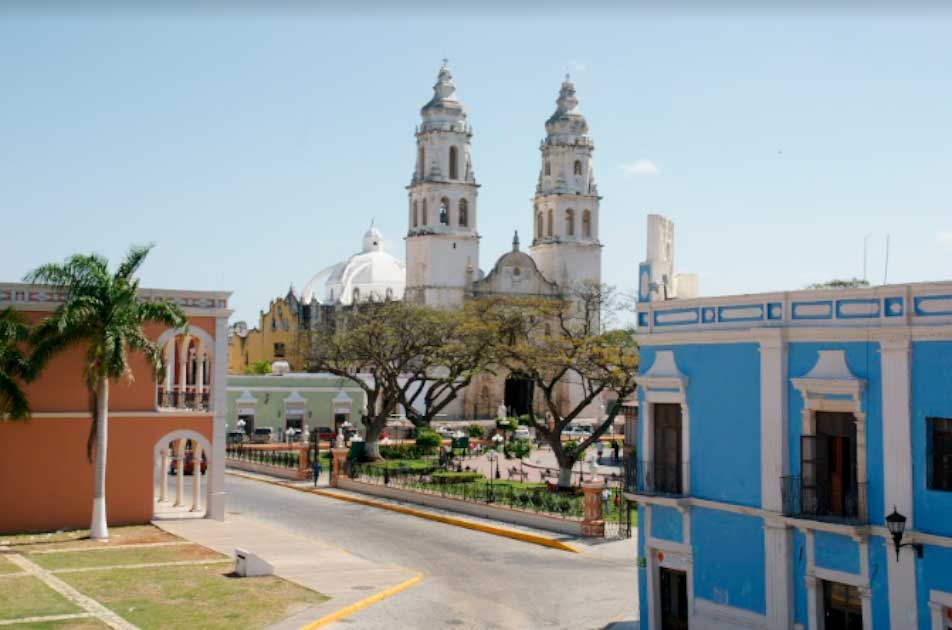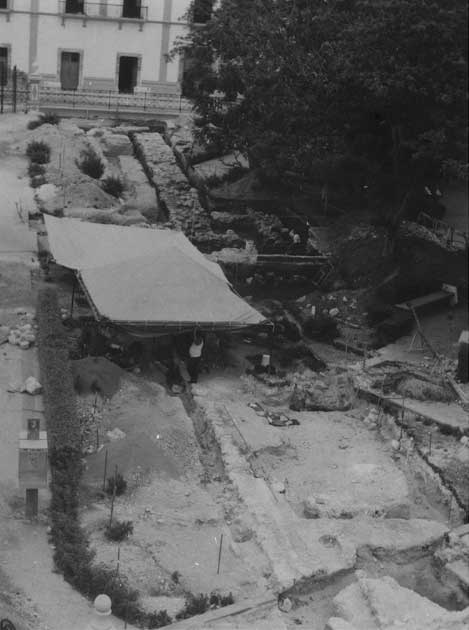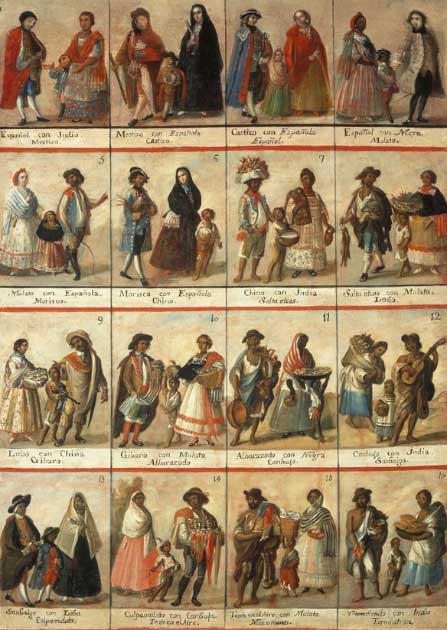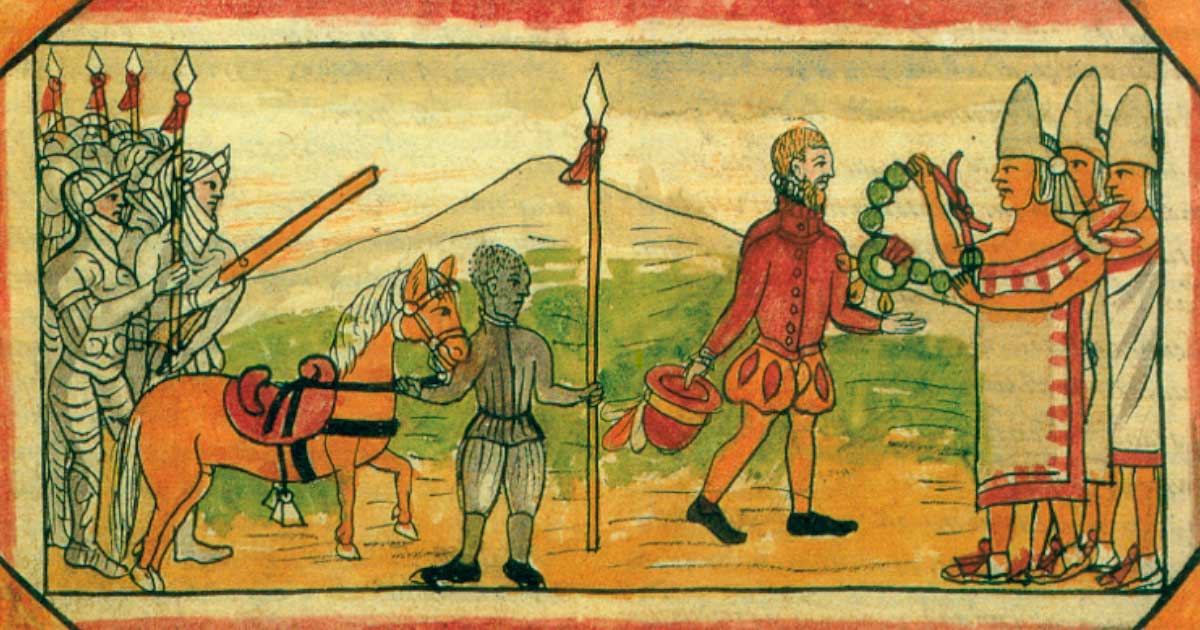Cross-Cultural Living and Dying in Colonial Campeche, But No Sex
2022 is shaping up to be a big year for colonial era discoveries in Central and South America. Only in May Ancient Origins covered the story of archaeologists studying “42 syphilis-ridden colonial Spaniards” unearthed in a 500-year-old hospital in Lima, the capital city of Peru. Now, a new DNA study is shining light on the social, cultural and sexual divides of Campeche, one of the Spanish Empire's most important Mexican ports. The study has shown that although the first colonial Europeans, Africans and Indigenous Mexicans lived alongside each other and were buried together, they did not interbreed.

Campeche plaza in the state capital Campeche, once an important colonial port, located in southern Mexico. (Antiquities Publications Ltd)
Living, Playing and Dying in Campeche, But Certainly Not Copulating
After the conquest of what is today Mexico in the 16th century, Campeche, a matrix of baroque colonial buildings and crumbling military architecture, replaced the nearby Maya trading settlement of Ah Kin Pech. Over the last three decades Campeche’s central plaza has been excavated and found to contain “multi-ethnic” colonial era graves dating to between 1540 AD and 1680 AD.
- Bones Reveal Story of Three African Slaves During Spanish Colonialism
- Hernan Cortes: The Conquistador Who Beat the Aztecs
The DNA of ten individuals, comprising eight Indigenous Campechanos, one African female and one European male, has now been reanalyzed. The scientists safeguard their conclusions by pointing out that while their geographic data is accurate, “only rough, conventional sex estimations could be made for six of the individuals studied here and could not be made at all for the other four due to commingling and poor skeletal preservation.”
Nevertheless, the researchers were able to conclude that while all three cultural groups lived together, and shared the same burial site, the results show “no evidence of genetic admixture.”

The bodies were recovered from the main plaza of Campeche. The image depicts the excavation at the Campeche burial site in 2000. (Antiquities Publications Ltd)
New Discoveries Inspired a Reanalysis of Campeche Bodies
Vera Tiesler is a professor of bioarchaeology in the Department of Anthropological Sciences at the Autonomous University of Yucatán in Mexico. As lead author of the new study, published in the journal Antiquity, in 2001 and 2007 Tiesler failed to extract aDNA, or ancient DNA, data from the Campeche cemetery population.
More recently scientists have discovered that the petrosal portion of the temporal bone, one of the densest bones in the body, offers better genetic results than other skeletal elements. This breakthrough inspired the researcher to re-analyze aDNA from ten of the bodies recovered from the Campeche burial site population.
Reading Ancient DNA GeoTags
Determining the geographical origins and potential “biological affinity” of the recovered bodies, Professor T. Douglas from the University of Wisconsin analyzed the ten isotope samples. In the context of biology “affinity” refers to the strength by which two (or more) molecules interact or bind, according to NanoTemper. Furthermore, both conventional dating and archaeometric analyses of the human remains were performed by a team at the Laboratory of Bioarchaeology at the Autonomous University of Yucatán, Mexico.
The results of the isotope analysis showed the cemetery contained mostly “first-generation immigrants from near and far, including at least a dozen individuals from West Africa.” So detailed was the study that it revealed the local bodies showed evidence of “cultural head shaping,” while the African had “dental chipping,” a distinctly African practice.

18th century oil painting depicting the different castes within the caste system of New Spain, the name given by Hernán Cortes to the area during the Spanish conquest of the Aztec empire. Racial mixing was a colonial preoccupation up until the Independence of Mexico. (Public domain)
Identifying Ancient Social Boundaries and Cultural Divides at Campeche
In the “Discussion” section of the new paper, the authors kindly summarized the most noteworthy trend derived from the study of the Campeche bodies. Despite having lived in close proximity, and being interred in the same cemetery, no evidence of mestizaje (a term to denote the racial mixing across groups) was identified.
- Gonzalo Guerrero: Father of the First Mestizos and Army Captain of the Mayans
- The Controversial Role of La Malinche in the Fall of the Aztec Empire: Traitor or Hero?
The researchers explained that the spatial distribution of the locals and immigrants of different ancestries across the Campeche cemetery confirmed “a prompt and forced integration of all segments into the new Novohispanic social fabric.” This means colonial Europeans maintained “us only” social hubs in the New World ensuring cultural separation in life, with the three people groups only really coming together in death and burial in the Campeche plaza cemetery.
Top image: Colonial sources attest that Juan Cortés, slave of the soldier Juan Sedeño, was the first African registered in New Spain. He was part of the military consortium led by Hernán Cortés in 1519 (Bishop Diego Durán). Source: Arqueología Mexicana / Raices / Antiquity Publications Ltd
By Ashley Cowie


















Comments
Hi All,
Okay, guess I better write a scathing letter to PBS who produced Latino American's Foreigners in their own Land.
No evidence the Cross-cultures interacted with one another physically resulting in offspring. So where then did the Meziotes & Mulattos come from then if that be the case upon this discovery?
Is my only question pertaining to this latest discovery to hail from Mexico.
I know one thing it must have boggled the mind when Rodney King Riot went down in L.A.
Finding those representative's of Law Enforcement, "Not Guilty", there was crowds recorded all over The News dancing under The Mexican Flag chanting, shouting No Justice, No Peace African American's & Mexican American's United.
Hi All,
Okay, guess I better write a scathing letter to PBS who produced Latino American's Foreigners in their own Land.
No evidence the Cross-cultures interacted with one another physically resulting in offspring. So where then did the Meziotes & Mulattos come from then if that be the case upon this discovery?
Is my only question pertaining to this latest discovery to hail from Mexico.
I know one thing it must have boggled the mind when Rodney King Riot went down in L.A.
Finding those representative's of Law Enforcement, "Not Guilty", there was crowds recorded all over The News dancing under The Mexican Flag chanting, shouting No Justice, No Peace African American's & Mexican American's United.